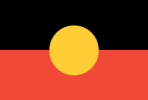A national sporting organisation is recognised by the Australian Sports Commission as the pre-eminent body for the development of a specific sport in Australia. National sporting organisations are eligible to receive funding from the Australian Sports Commission. View the Australian Sports Directory for a list of recognised national sporting organisations. For example, in the sport of basketball, its national sporting organisation is Basketball Australia.
State sporting associations, sometimes also called state sporting organisations, are the recognised pre-eminent governing body for a sport in a particular state Victoria. These organisations are responsible for developing a specific sport from community participation to high performance levels in a jurisdiction. In Victoria, the Victorian Government determines the eligibility for recognition. View the list of all recognised state sporting associations in Victoria. For example, in the sport of basketball, its state sporting association in Victoria is Basketball Victoria.
A professional league, for the purposes of the new National Policy, is a privately owned competition outside of those leagues managed from within a national sporting organisation or state sporting association. Most leagues that we see and enjoy are managed within a national sporting organisations. At times though, this ownership structure is different, which is why the National Policy also specifies that these privately owned leagues are strongly encouraged to also follow the policy’s requirements. Privately owned leagues are not eligible to receive funding from the Australian Sports Commission. For example, in the sport of basketball, the National Basketball League (NBL) is privately owned, and would be considered a professional league under the National Policy.


